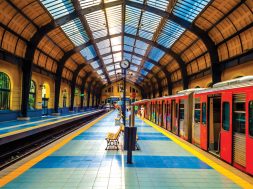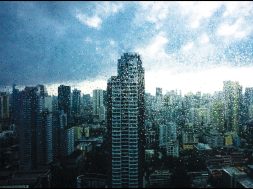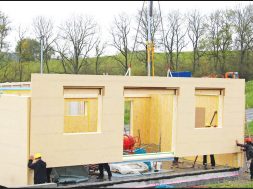Architecture: happy blend of science and art
“I believe architects are creators; creation is not magic but magical,” says Architect Rafiq Azam
Architecture is all about creating place for desire, hopefulness and memories, and an architect should also design with great sensitivity and responsibilities. In an exclusive interview with ACE Update, Rafiq Azam shares his love for Tagore, Rumi, and Rohe and how they helped him develop his sense of architecture.
What drew you to architecture and how do you see your role as an architect?I often say that I am an architect by chance and a painter by conviction. If I were given the option to choose my career early on in life, I’d certainly have ended up as a painter. When I was 7, I took up colours painting and brush and learnt to paint. I picked up the skill of mixing colours and making the best use of the transparency of watercolours. I loved trees and the green of their leaves which came in so many different shades. I was also fascinated by the play of light on the leaves, especially in the afternoon when the sun began to slant and its rays mellowed. My love for light, water and green stayed with me when I abandoned my plan to become a painter and became an architect instead. It is manifest in the way I design buildings – whether residential, commercial or corporate – and try to bring life to them. I was convinced that architecture was a happy blend of science and art. I see myself as an architect is like a dream seller, creator of space which not only contains the desire of people but also flourish the desire beyond.Can you describe the evolution in your work from when you began until today?At the end of high school, I was preparing to enter Institute of Fine Arts and saw my father unhappy with my decision. Like many other fathers, he wanted me to be a doctor, lawyer or engineer. It was a very difficult time for me and one of my cousin sisters told me that there is a subject called ‘architecture’ where I can continue my painting journey. So I admitted into the Bangladesh University of Engineering and Technology (BUET) in the department of architecture, even without knowing what architecture is all about.
In 1984, after the death of my father, our old house with a courtyard in the middle was in need to renovated or demolished. Since we are nine siblings, we decided to renovate and extend the house to accommodate all. We went to an architect and he designed the house. After seeing the plan, my mother was shocked. She asked “where is my courtyard and garden where I spent time with your father?” What sort of house is this? I have already lost my husband, now I am losing my memories.
It was the first time I realised that architecture is all about creating place for desire, for hopefulness and memories. Being a student of third year architecture, I took the responsibility to design our family house with the desire to retain the memories of my mother. I designed a courtyard and a garden both at level two where she wanted to have her room. So for the first time hanging lawn came into my design. That is the reason I used to say “I learnt architecture from my mother”. Apart from the learning from my mother’s house, gradually I started learning other things in architecture such as the landscape, climate, human psychology, philosophy and so on. I love to go through many issues to come to a simple solution. I love Mies van der Rohe’s idea of “less is more”. That is why I am interested in Japanese architecture and painting which influenced many great architects and painters for many years. I am also fascinated by Greco-Roman and Mughal architectural developments. However, there are other sources of inspirations too for my architectural developments. Look at Bangladesh, where water is most precious and abundant, and how life is subtly woven with it. This is what makes our country of poetry. Bangladesh is the largest delta on earth with more than 52 major rivers that carry water from the Himalayas in an intricate pattern to the Bay of Bengal. During monsoon these rivers inundate two thirds of the country’s land making water the major element of our landscape. When the water recedes, it leaves a fine layer of fertile alluvial soil and the entire landscape is transformed into large patches of paddy fields.The yellow harvest field and dense green bouncing, vast sky and moving clouds; breeze flowing over the water and swampy land; midday sun downing and stretching its last light to twilight; thousands of years old ruins and history, coming back as mystery, sweet memory and melody – all these are my source of inspirations.
When Lalon (a mystic Sufi minstrel and philosopher) says “if there is not one thing inside the body, it is not outside the body either”. When I read Rabindranath, Kazi Nazrul or Jibanananda Das – they all inspire me. When I walk through the architecture of Mazharul Islam, I feel the whispering of the wind. When I see a small hut of a farmer, I sense the humanity and humility. When I hear the music of Ali Akbar Khan, I lose myself into the nothingness. When I look at Kahn’s parliament complex, I hear the silence.
These all helped me develop my sense of architecture.
What role does green building play into your work?Certification of a green building as per green building standard is important to attain certain physical aspect of the building. But most important thing is to understand the essence of green, psychologically. In Bangladesh, for example, important thing is to understand the essence of water and its transforming relation with green. Water is the protagonist in our landscape. Human life here exists in a fine balance with water, light and greenery, which is lost when there is separation from these fundamental elements. That separation – not necessarily in urban living – is the cause of our alienation and waning imagination. This is why it is important that our architecture restores this equilibrium.
What is the biggest challenge the profession of architecture is facing?In the process of modernism, post modernism and globalisation, Bangladesh as a new country failed to connect its 2,500-year old civilisation with the contemporary world culture. So the biggest challenge that architecture in Bangladesh is facing the crisis of identity and lack of orientation. We can overcome this through the knowledge and understanding of the land and landscape. Architects are not designing projects, except very few — they should design with great sensitivity and responsibilities. We are lacking the source of inspirations.
What advice would you give to young architects starting out today?I believe architects are creators; creation is not magic but magical. To become a creator needs a long journey, a journey with honesty, generosity and perseverance to attain the goal of well-being of the society. Success is not something to wait for; it is something to work for. As Rumi said, “When light returns to its source, it takes back nothing from what it illuminated.” Before we leave this world, let’s become light.
9
Cookie Consent
We use cookies to personalize your experience. By continuing to visit this website you agree to our Terms & Conditions, Privacy Policy and Cookie Policy.









